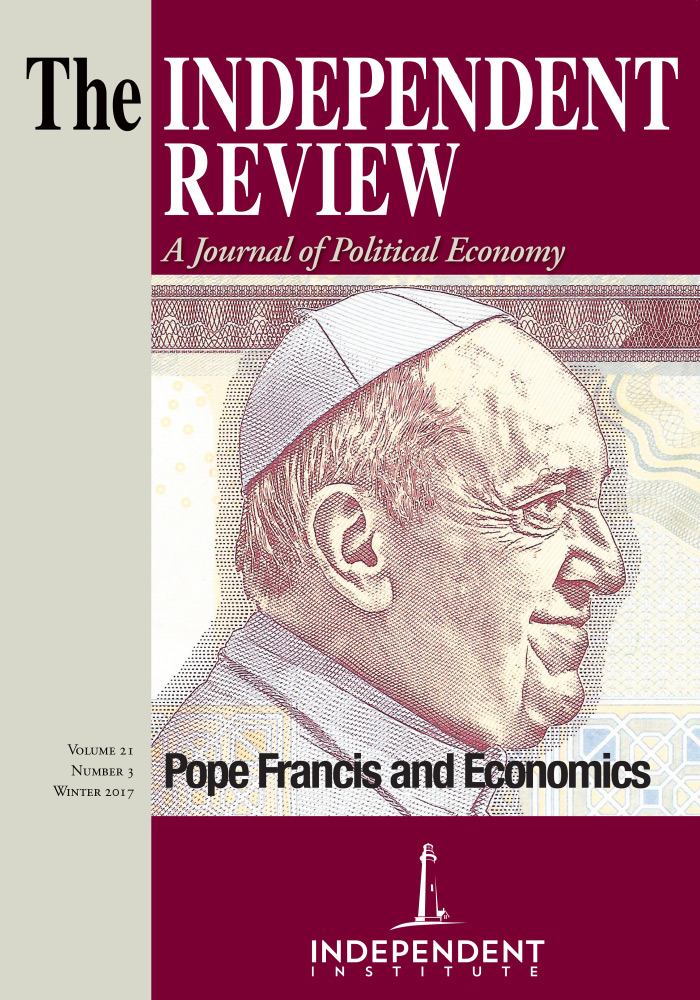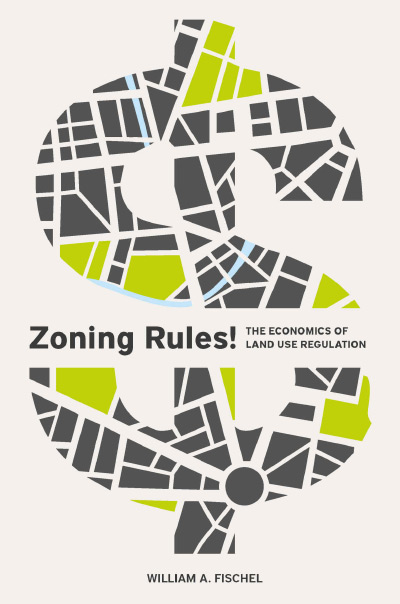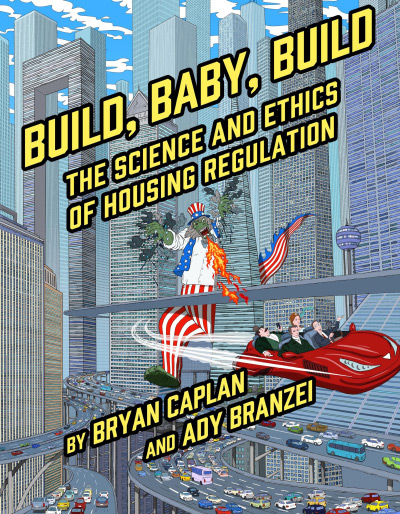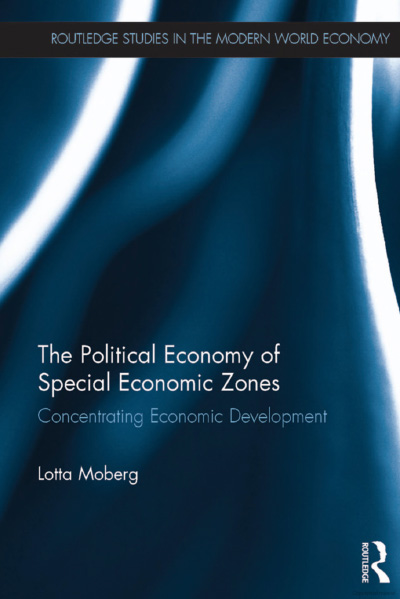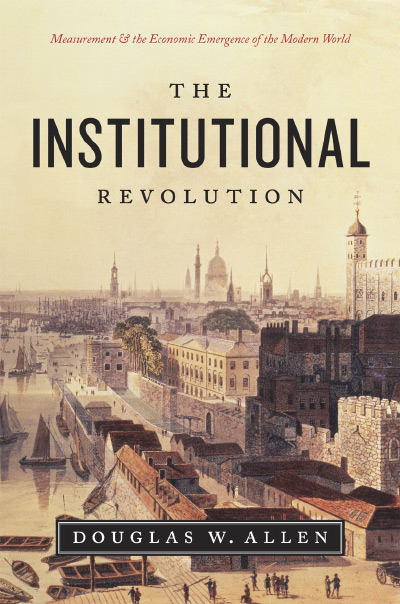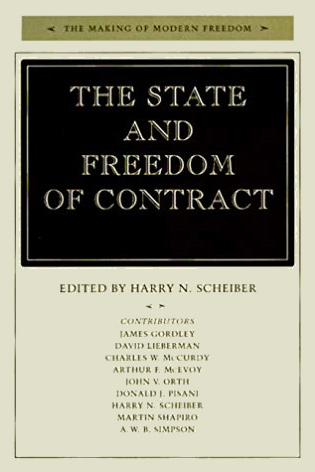Few government policies have greater impact on everyday lives than zoning and land-use regulation. Through zoning codes and comprehensive plans, local governments (and sometimes regional government) come surprisingly close to dictating what size houses are available to consumers, what they look like, and where they can be built. So extensive is government’s role in land-use decisions that deviations from the zoning map or land-use plan can only occur with the explicit permission of local government. Zoning is so ubiquitous that only one major city in the U.S. operates without it: Houston. But even this city’s relatively free market in land use is under near constant threat from political proponents for the collectivization of land use through government control.
Perhaps it’s this pervasiveness of collective control that has discouraged economists from examining its impact comprehensively. While a vast academic literature has emerged examining the political economy of zoning and land use controls in other fields such as public administration and, more naturally, urban planning, economists have focused on narrower questions such as the regulatory impact of land-use regulation on housing development and housing affordability, not the process itself.
The one notable exception is Dartmouth economist William A. Fischel. Fischel’s path breaking 1985 book, The Economics of Zoning Laws (Baltimore, Md.: Johns Hopkins University Press), changed the way economists looked at urban policy, particularly land use policy. Building on the work of Robert H. Nelson (Zoning and Property Rights. Cambridge, Mass.: MIT Press, 1977) and law professor Robert Ellickson (“Suburban Growth Controls: An Economic and Legal Analysis,” Yale Law Journal 86: 385-511, 1973), Fischel proposed that understanding land-use regulation and, indeed much of local government activity, required understanding property rights and how local decisions were made within the institutional context of those rights. While solidly within the field of public choice economics, Fischel’s analysis was rooted in the transaction costs paradigm pioneered by Ronald Coase.
Zoning, Fischel argued, effectively collectivized property rights so that private use was trumped by community interests, putting politics at the center of land allocation decisions. Fischel’s work laid the foundation for what might be broadly termed the “constitutional economics” of urban policy and land-use regulation. Through comprehensive plans and the instruments they adopted to implement them—zoning codes and zoning maps—local governments assumed nearly complete control over land use, setting the rules of the game and establishing the values on which those decisions would be made. Rules are important, and understanding how those rules come about and framed local decision making is essential for understanding how governments make those decisions. Fischel’s work brought these concepts into the economics profession.
Fischel clearly has not abandoned this inquiry. Moreover, he has deepened his analysis through additional research into history and application, revising some of his earliest theses while adding new levels of nuance and complexity in his follow up, Zoning Rules! The Economics of Land-Use Regulation. The book is more than an update to the original. Zoning Rules is likely destined to be the signature classic in the field, allowing it to be used as a textbook for economics courses at the graduate and undergraduate levels with an accessibility that could give it a strong foothold in allied social sciences. The book is intended for a broad audience although those with more armchair interests might find the presentation and exposition a bit dense. Fischel’s discourse draws on case studies, qualitative research, and casual observation to help explain the key concepts and insights—a valuable contribution in its own right—but his writing style never fully deviates from a more academic tone or seriousness.
Zoning Rules has a logical progression that allows readers to parse topics in a way that suits their interests while also providing a coherent presentation that builds an intellectual framework for understanding why zoning operates the way it does and why urban and real estate economists need to take it more seriously.
Fischel starts out with an essay on land and its role in urban development, using an accessible first person narrative style to explain key concepts, land development trends, urbanization, and core concepts such as “land rent.” The U.S., he notes, is largely unurbanized—just 4% is developed—and he discusses why so many among the lay public often guess much higher figures (as much as 90% in some cases). This difference between perception and reality becomes a jumping off point for examining the land development process, and zoning’s role in particular, in deeper detail. He also usefully compares why American land use patterns tend to differ from other places, noting, for example, the legacy role of feudal systems in shaping modern land law in Europe. While Zoning Rules is a U.S.-centric book, these comparisons are useful for the reader to provide context and explain some of the more unique characteristics of land use law and land development.
Chapter two dives into the murky and eccentric world of American zoning law administration and structure, a consequence of zoning being largely a function of local government rather than federal or state government. The decentralized nature of U.S. land-use regulation is examined, noting that the zoning codes are found in city halls, not county administration buildings or in state legislatures. His summary of the mechanics of zoning administration and often dysfunctional local decision making is spot on, and Fishel’s ability to draw on his own experience on a planning board goes a long way to explaining the dynamics of these decision making processes. Zoning codes are adopted to implement “Delphic master plans” (p. 41), he notes. They often are created to conform to the visions of armchair citizens serving on city commissions and zoning boards more than the realities of the local real estate market.
Nevertheless, Fischel argues, because zoning is ultimately a political process, economists are too quick to dismiss its value in the context of public goods and local collective decision making. A strong argument can be made that the process is a way of revealing the collective preferences of the community based on localized and decentralized knowledge of land and the potential benefits to land owners. While economists’ models may ignore the political nature of land-use control, the reality is these citizen planning boards are crucial to the land development process and these responsibilities were delegated to them by local governments beginning more than a century ago.
This background is crucial for providing the context for Fischel’s masterful summary of the complex and meandering history of American land-use law in the third chapter. This is well worn territory for Fischel, and the readers of Zoning Rules will benefit from several decades of reflection and analysis on the judicial deference that is now a hallmark of land-use law and administration in the U.S. This chapter puts into historical and conceptual context complex legal cases such Euclid v Ambler Reality, the troubled history of private covenants as an alternative to zoning, Nectow vs. Cambridge, Lucas v South Carolina Coastal Council, and dozens of other cases that are important for understanding why American land use regulation appears as chaotic as it does. As a political process, the key actors are not necessarily the private real estate developers and builders. “The person that best understands the nature of zoning,” Fischel observes, “is a practicing lawyer with a client” (p. 69).
In Chapter four, Fischel delves into more conventional territory, examining the effects of the property tax, its persistence as a tax revenue raiser of choice at the local level, and the implications for the political economy of land use regulation. Many economists view the property tax as a benefit tax—a tax levied on potential users to fund a public good. Zoning, Fischel argues, brings the property tax closer to this role because, paradoxically, it limits the ability of real estate markets to adapt to constantly shifting demand. Under zoning, land is less likely to be shifted into different uses because property is immobile and property owners can’t avoid the tax. Consequently, uncertainty about future land development is reduced, increasing the likelihood land values will be stable. This encourages private investments, particularly in residential housing. Indeed, Fischel’s narrative embeds the insight that the history of zoning is really grounded in the attempts by local property owners and communities to maintain and increase the value of their property by limiting real or perceived threats from the unregulated market. This is part of what he terms the “good housekeeping” (p. 192) approach to local planning, where local officials adopt policies that support home values and limit encroachments that they believe could negatively affect them. Zoning has become particularly useful at protecting property values in order to fund what may be the most important good provided by local governments—education.
Fischel (The Homevoter Hypothesis. Cambridge, Mass.: Harvard University Press, 2001) coined the term “homevoter” to describe this phenomenon and advanced the Homevoter Hypothesis to explain how and why local residents use local zoning codes to maximize the value of homes in order to fund public goods at sufficiently high levels. Zoning was adopted in a startlingly quick way during the early twentieth century, and understanding its ubiquity is crucial to its connection to the rise of homeownership, the focus of Chapter five. Challenging conventional planning narratives, Fischel argues that zoning’s rise was not grounded in the inefficiency of nuisance law to resolve disputes over externalities. Rather, homeowners recognized the efficiency of collectivizing and regulating land use as a way to maximize residential property values. This explains its continued popularity among local governments.
Economists will likely find Chapter 6, an application of the Coase Theorem to the analysis of land-use regulation, particularly insightful as he uses transactions costs theory to show how zoning establishes entitlements that actually reflect the preferences of the median voter. While not a perfect representation of the real world, Fischel argues that this model is as plausible and works as well in the context of land use as its application to the modern American business corporation. These ideas are explored further in the next two chapters, where he traces suburban development patterns using the prism of the Homevoter Hypothesis and the Coasian transaction cost paradigm. Cities apply zoning and growth management programs based on the “good housekeeping” approach, where the goal is to maintain the quality of their communities (and protect property values). In one of the more provocative sections, Fischel presents evidence that homeowners in un-zoned Houston suffer economically because neighboring properties can be converted at any time to non-residential uses. Homeowners with properties governed by covenants, in contrast, are able to sustain property values more effectively.
The point, as Fischel notes, is not to pass judgment on the net benefits or disadvantages modern zoning. Rather, Zoning Rules is an attempt to recognize the practical political economy of local land use regulation. In fact, Fischel’s final chapter addresses some of the inefficiencies he sees that have cropped up because of an excessive role played by homeowners whose priority is to maximize home values to the exclusion of most other land uses (including multifamily, rental, commercial, and nonresidential uses not directly benefiting residential property owners). Zoning is fundamentally a bottom-up governing institution, he says, and recognizing its decentralized nature is crucial to meaningful reform.
Some reforms may be judicial, but these are long term. Citing Ellickson (1973), Fischel argues that one positive reform would be to allow for regulatory takings to be addressed through monetary awards rather than simply providing an injunction against implementing a zoning law. This would shift local governments’ decision criteria toward including the costs of imposing regulations on property owners, encouraging them to more fully address the regulatory costs imposed by their decisions. A second reform might be resurrecting “harm/benefit” criteria for determining regulatory takings. Thus, homeowners could be compensated based on the harm they bear based on the presumed collective benefit that comes from imposing the regulation.
Fischel concludes with a “dutiful dozen” of recommendations that would rationalize local land use regulation:
- Reducing federal tax subsidies to home ownership so that residential development is treated the same way as any other asset in a household’s financial portfolio.
- Reexamining conservation easements with the goal of removing prohibitions on land development “in perpetuity,” allowing the land market to function more flexibly in areas where urban development is likely.
- Removing the “double veto” for land use decisions, where one jurisdiction (e.g., environmental regulatory agency) can thwart development approved by another.
- Refocusing legal remedies for exclusionary zoning to account for which entities are most likely to enforce them, again to reflect local knowledge and priorities.
- Redirecting judicial concerns about exactions so they recognize the burdens of similar developments might vary across time and geography.
- Entrusting low-income communities to make land-use decisions themselves without interference from top-down agencies that may have little knowledge of local land uses and their impacts.
- Reigning in federal advocacy based on false claims such as farmland loss and limiting environmental litigation to parties with a direct stake in the outcomes/impacts.
- Endogenizing zoning into the theoretical and empirical models of economists and other researchers rather than assuming that zoning operates independently of land development decisions.
- Expanding growth management reforms beyond those regions that have already adopted them, recognizing that other areas and regions will adopt them as soon as residential property owners seize control of the local regulatory apparatus.
- Ensuring reforms such as Portland, Oregon’s growth boundaries are thoroughly studied in terms of housing impacts and unintended consequences before recommending their adoption elsewhere.
- Eliminating rent control to avoid the inefficient shifting of households into homeownership.
- “Make only little plans,” because incremental change is less likely to be targeted by antigrowth interests and is more practical to implement.
One important drawback to Fischel’s relentless focus on local government decision making is what appears to be short shrift given to alternative paradigms and practices. The U.S., for example, experienced a dramatic and significant shift in planning to regional and state levels beginning in the 1980s. Currently, Oregon and Washington State have meaningful statewide growth management laws that restrict and direct local government land use regulation. California has empowered counties to provide regional land use regulation and guidance, with some localities (e.g., Ventura County, Sonoma County) adopting very strict growth controls. The Minnesota legislature established a regional government for the Minneapolis-St. Paul metropolitan area that has altered the political economy and functioning of the real-estate market. Additional analysis of these cases would benefit the reader, particularly as they effect the application of the Coasian analysis he uses to understand the collective property rights over land exercised at the local level. In this vein, the implosion of Florida’s statewide growth management law in 2010 after two decades of steadfast attempts at implementation may have important implications for understanding how these collective property rights are identified, defined, and enforced as well as the balancing of private, state, regional, and local interests.
In addition, Fischel’s analysis shows little awareness of a burgeoning international literature that has extended Coase’s transaction cost paradigm to urban planning outside the U.S. Notable contributors to this literature include the prolific research of Lawrence W.C. Lai, U.K. political economist Mark Pennington, Stephen Davies, or Frank Lorne. Fischel’s approach may well be further broadened into a general theory of zoning and local land use political economy by venturing beyond the U.S.
Neverthelesss, Zoning Rules is an exceptional economics text written by an exceptional economist. Few economists have had the opportunity to explore an issue as thoroughly entwined in American governance and life, let alone contemplate the implications of different regimes while being informed by personal knowledge of implementation. Fischel’s book will do more than supplant his previous pioneering work—it sets a new standard for applying economic analysis to local political economy.
| Other Independent Review articles by Samuel R. Staley | |
| Winter 2022/23 | The Poor Side of Town: And Why We Need It |

